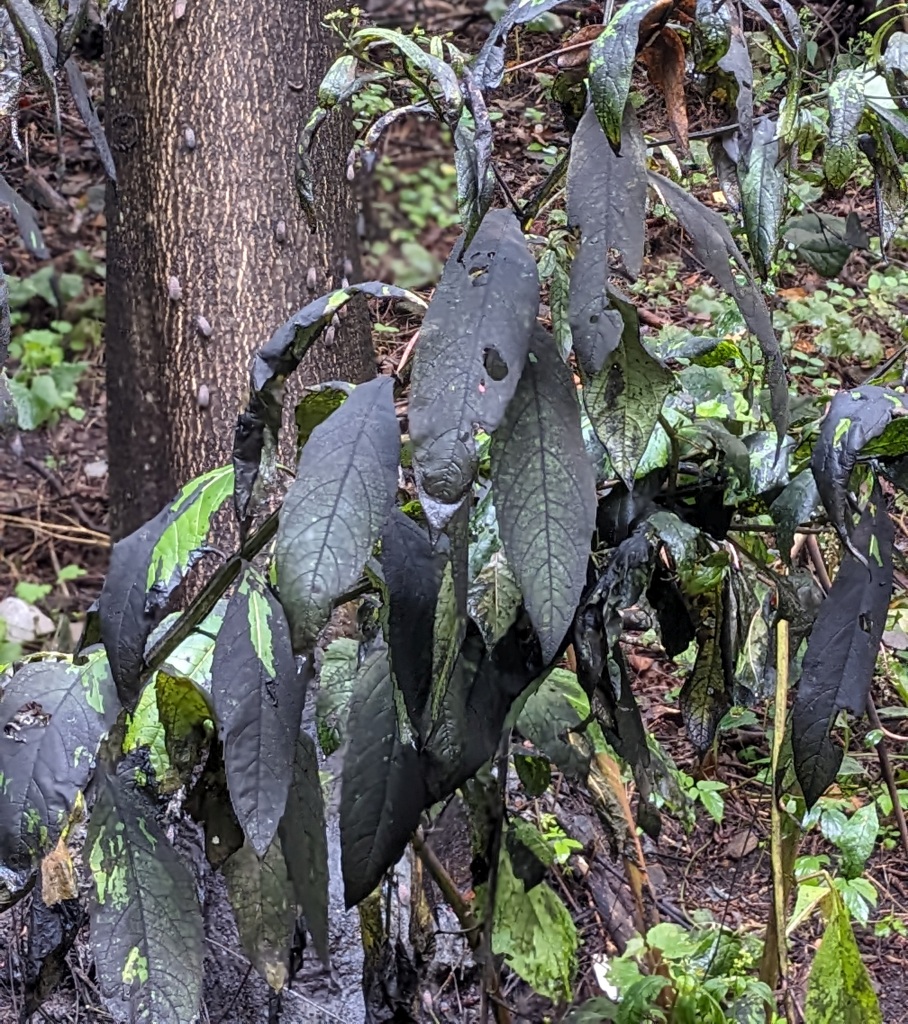
27 August 2023
In Schenley Park’s Panther Hollow there are only a handful of Ailanthus altissima trees (Tree of Heaven) which I rarely paid attention to until recently. A couple of weeks ago I noticed that the plants and ground beneath those trees were wet, though it had not rained. This week the leaves and ground are black. Both phenomena are a by-product of the spotted lanternfly (Lycorma delicatula) invasion.
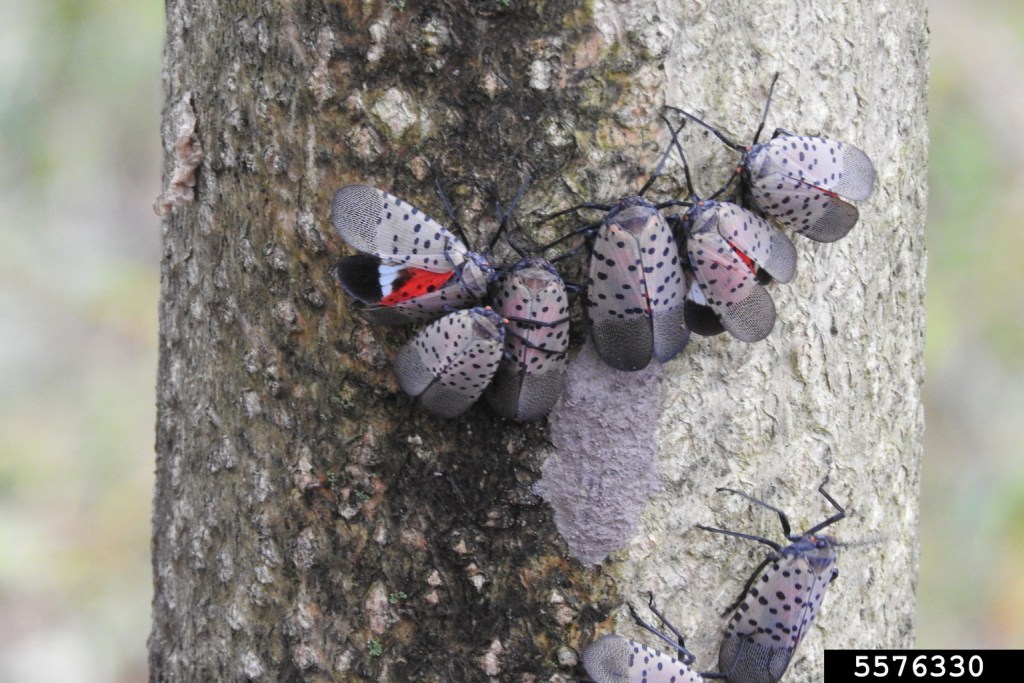
Spotted lanternflies (Lycorma delicatula) are sucking insects that pierce the bark of their host plant, Ailanthus, and sip the sugary phloem that travels from the leaves to the rest of the plant. (Phloem flow is orange in the diagram below.)
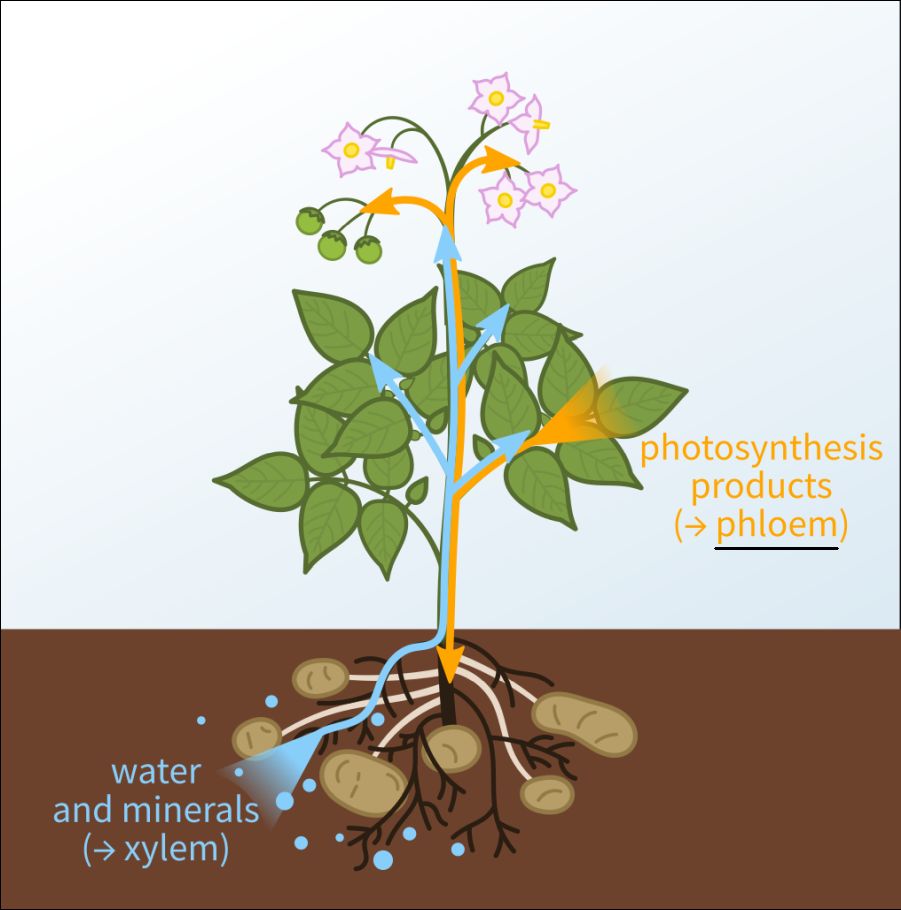
Everything that eats excretes and spotted lanternflies are no exception. Their watery “poop” is called honeydew because it is full of sugar.
If there were only a few lanternflies we would never notice the honeydew but when a large number coat a tree the honeydew is hard to miss, especially for the consumers of honeydew: bees, wasps, hornets, ants and butterflies.
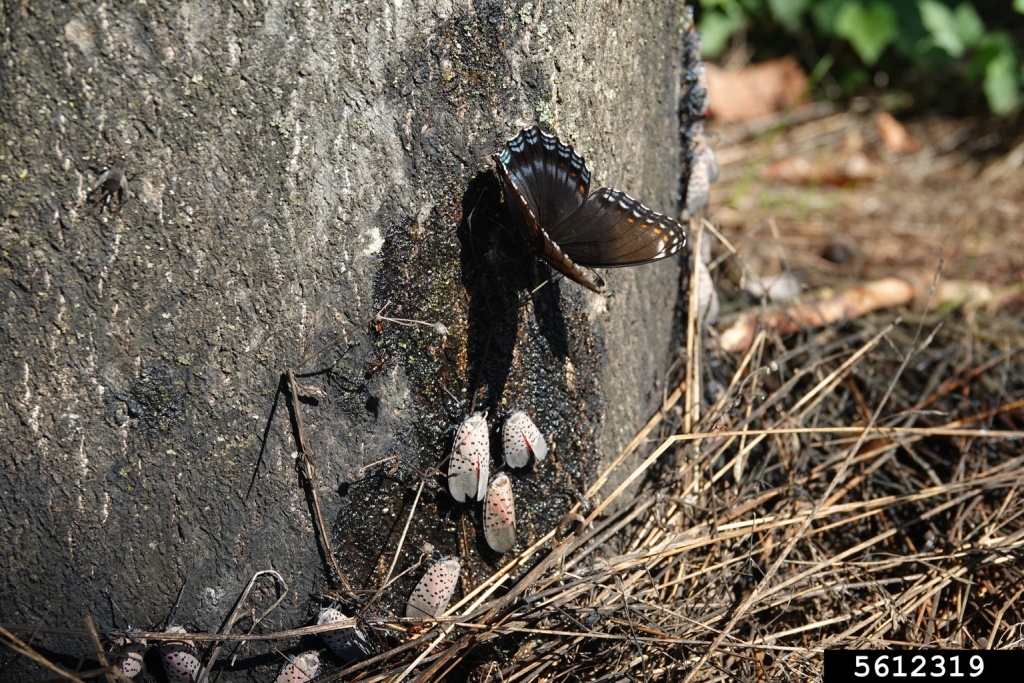
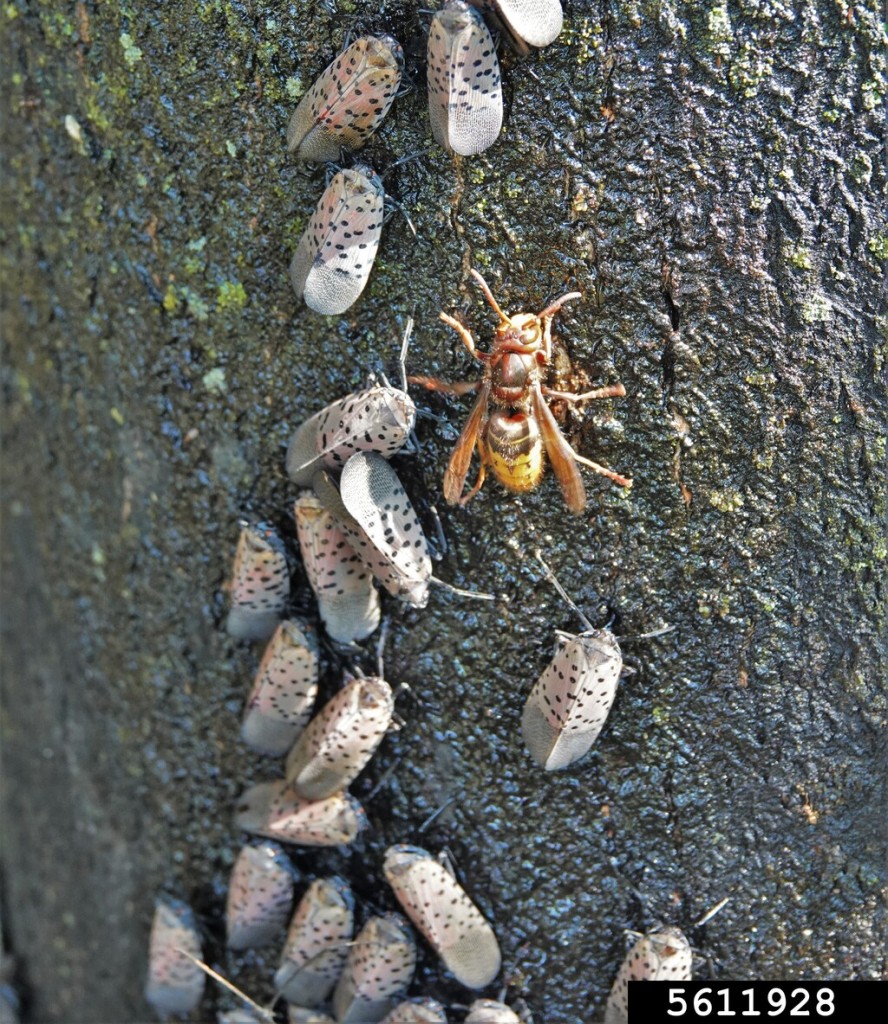
Sugary honeydew eventually grows sooty mold. Everything with honeydew on it turns black.
Sooty mold is a fungus that appears as a black, sooty growth on leaves, branches and, sometimes, fruits. It is non-parasitic and not particularly harmful to plants apart from being unsightly. Potentially, it could affect the plant’s ability to use the sun for photosynthesis. If you can rub the black growth off with your fingers, it is probably sooty mold. If you cannot rub it off, it is most likely something else.
— Univ of Hawaii Master Gardener Program: FAQ, Sooty mold
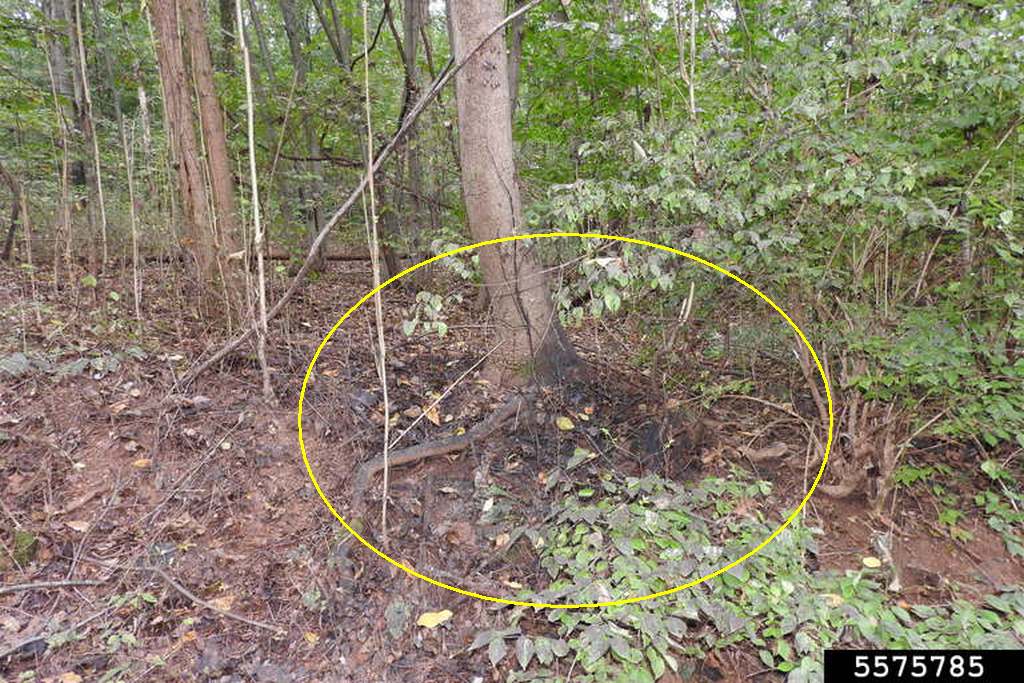
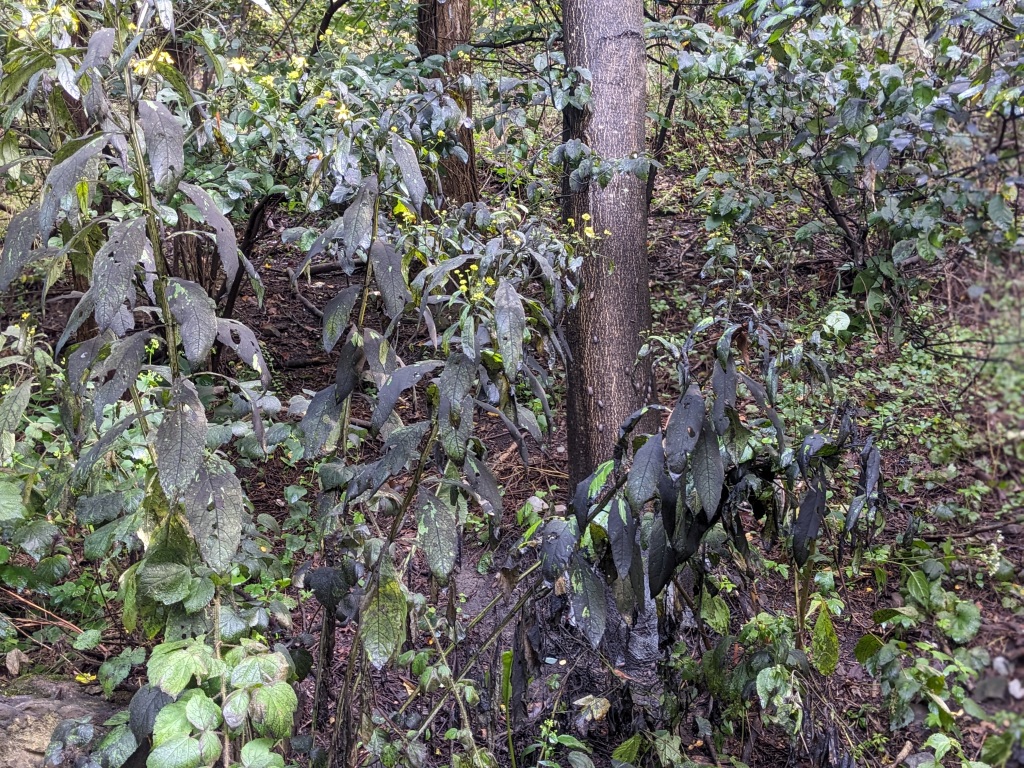
Eventually white mold may cover the honeydew. I haven’t seen this yet but I’m watching for it.
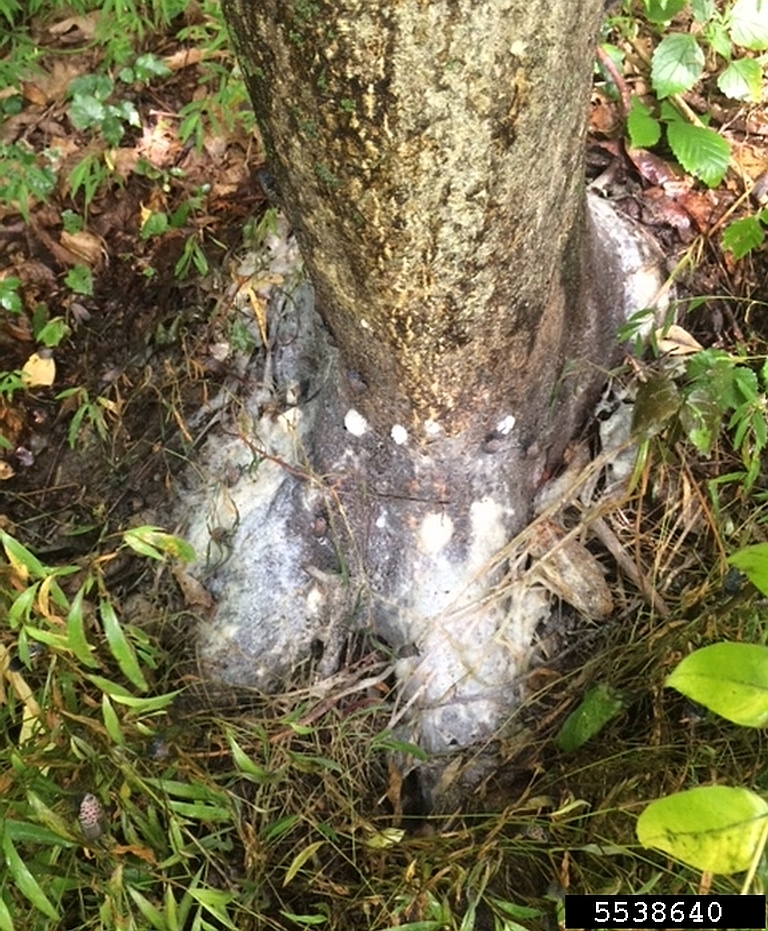
Will we ever be free of spotted lanternflies? Yes! Check out this blog This, Too, Shall Pass.
(photo credits are in the captions with links to the originals)
Thanks for posting this. It is really concerning to me now because I am spraying with Neem Oil when the bees are not active but didn’t realize the bees and butterflies are consuming the honeydew. And after I sprayed yesterday, I started wondering about the toads in my yard. I don’t always think about what I don’t see. I know they are here because I have seen them earlier in the summer. I am beside myself with it this year because I did not see any eggs last year, but my yard is polluted with these flies. The egg masses must have been too far up for me to see. My yard is kind of woodsy and at the edge of the woods so there is a lot of vegetation. They are loving the black walnut, grape vine, and sumac.
My nephew suggested another chemical free method I have not seen tried yet but will be trying today. I will post it only if it works. Otherwise, I think I will be buying many extension cords to try the shop vac method because every time I spray, I am left wondering what else I may have harmed.